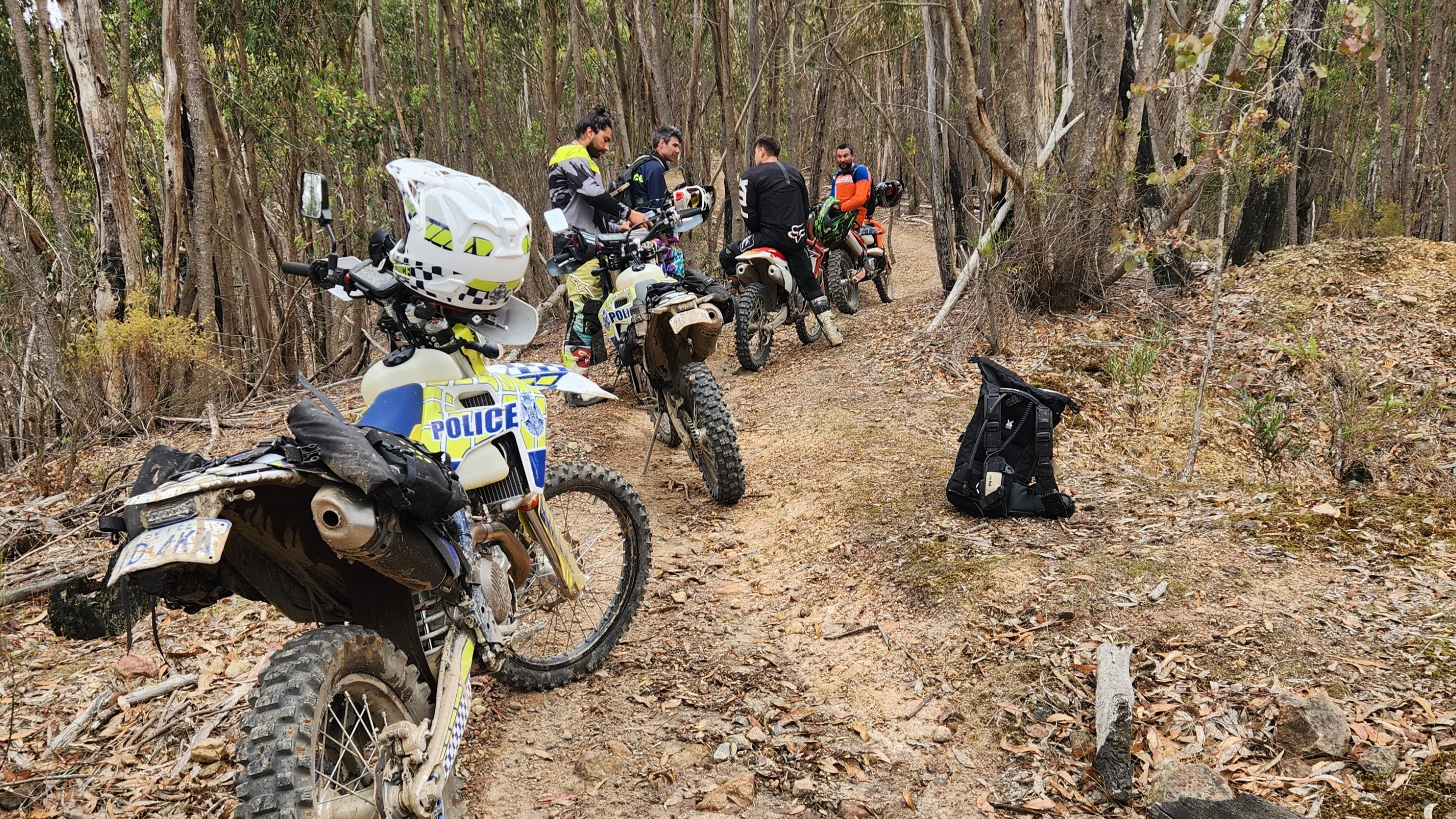Motorcyclists are among the most vulnerable road users. Police are always working with the riding community to keep all drivers and riders safe, and save lives.
Understand ways to help you ride smarter and stay safe. Whether you're commuting, cruising the coast, or heading off-road, your safety depends on the decisions you make every ride.
Key rider messages
- Gear up – Always wear an approved helmet and protective gear. It’s your best defence.
- Be seen – Bright or reflective clothing and headlight use will help you stand out.
- Ride to the conditions – Wet roads, loose gravel, or unexpected hazards require extra focus and caution.
- Stay alert – Every ride can change in a split second. Your safety is in your own hands.
Ride like no-one can see you
You should always ride with the mindset that other drivers don’t see you. Assume that you are invisible to them.
Drivers are often distracted by what is ahead of them, and not used to looking for motorcycles. You should:
- position yourself to be seen
- watch for turning vehicles, especially at intersections
- check for blind spots, if you can’t see their mirrors, they can’t see you
- make eye contact where possible when passing cars.
Do not rely on the other drivers to give you space. Ride defensively, confidently, and consciously.
Motorcycle road rules
Motorcycle riders must adhere to specific road rules to keep them safe on the road. These include:
- wearing an approved helmet
- following lane filtering and lane splitting rules
- only riding on the road, and not on the footpath
- holding a valid motor-vehicle licence
- riding a registered motor-vehicle.
For more motorcycle road rules, visit Transport Victoria motorcycle road rules.
Common risk taking behaviours
Motorcycle riders are over-represented in serious injury crashes. Our enforcement is about prevention and targeting risky behaviours.
Risk-taking behaviours create a dangerous environment on the roads for everybody.
Roadworthy Certificates
Roadworthy Certificates are not always a guarantee of a safe motorcycle. Take note to ensure your motorcycle does not have any dangerous or illegal damage, or modifications.
If a motorcycle appears dangerous or illegal, we can still issue a defect notice. We will also check with VicRoads if there is a concern about improper certificates.
Motorcycle modifications
You can modify your motorcycle for a better look or sound, as long as the changes are legal.
Modifications can sometimes render your motorcycle unroadworthy or non-compliant with Australian Design Rules (ADRs). Read the ADR & Vehicle Standards before making any modifications to your motorcycle.
Examples of illegal modifications include removing indicators, mirrors and mudguards, or fitting a loud exhaust.
Experience, training, and quick decision-making matter more than the size of your engine.
If you're riding a Learner Approved Motorcycle (LAMs), it's important to know that you cannot modify it.
The Learner Approved Motorcycle Scheme (LAMS)
Learners and restricted licence holders can only ride motorcycles approved under the LAMS.
LAMS motorcycles must remain in standard form. This means the motorcycle must remain as it was when it left the factory. You cannot add aftermarket exhausts, restrictor removals, engine tuning, or other performance-enhancing mods.
Even minor changes can make your motorcycle non-compliant, which means:
- you may be riding illegally
- you may lose your licence
- your motorcycle could be defected
- insurance may not cover you in a crash.
Modifying your motorcycle puts your licence, your safety, and your future at risk.
It is important to remember that standard LAMS motorcycle are not all slow, and many can exceed the posted speed limits.
VicRoads manage the LAMS register. Visit their site to read the full criteria for a LAMS motorcycle.
Motorcycle Crash Card
A motorcycle Crash Card is a small card that riders and passengers can keep in their helmets. It contains your personal and medical information that first responders can check in cases of an emergency.
You can get a Crash Card at several police stations. Find out more about how to use a Crash Card and where to get one from Transport Victoria.
Driver awareness
While riders can do many things to reduce the risk of a crash, there are also simple actions that drivers can take, including:
- indicating your intention to turn or change lanes well in advance
- when changing lanes, using mirrors and head checks to make sure blind spots are clear
- giving motorcyclists enough room to manoeuvre
- making eye contact with riders, so they know they've been seen.
Additional motorcycle rider resources
Understand the laws around motorcycle vehicle standards and road rules, and safety tips for all riders.
Updated

